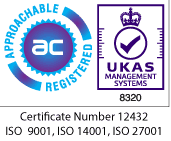Accelerating Local Government with Agentic AI
The Urgency for Efficiency in Local Government
The financial challenges facing Local Governments in the UK over the past few years have been impossible to ignore. In 2023 alone, Birmingham City, Nottingham City, and Woking Borough councils were all reported ‘bankrupt’. Clearly, the realities of growing and aging populations, increasing poverty, and strained funding are putting greater pressures than previously realised. Specifically, this is challenging social care, and housing and accommodation, which are both suffering from an increased need in funding which is not available.
At the recent ‘Future of Britain: Governing in the Age of AI’ conference (July 2024), organised by the Tony Blair Institute for Global Change, speakers suggested that the only opportunity presenting itself currently is the recent steps forward in Artificial Intelligence (AI), specifically Generative AI and Large Language Models.
Needless to say, it will require more than poems on ChatGPT or images on Midjourney to drive improvements in local services provisions. However, in the last year we have seen an AI development that shows promise, albeit with translation into reliable operations with secure environments. This new development is being referred to as Agentic AI, or multi-AI agent teams. But what does this new technology offer for Local Governments?
What is Agentic AI?
Agentic AI represents a shift from traditional centralised AI models to a distributed system comprising multiple specialised Agents working collaboratively. This approach allows for the division and specialisation of tasks among trained AI agents, which can efficiently solve complex problems by leveraging the strengths of each individual Agent within their specialised domain.
Agentic AI offers several distinct advantages over a traditional Large Language Models (LLMs), which are particularly relevant for environments where accuracy, transparency and security are paramount.
Imagine you are a council leader, with the power to bring the best people, with the best knowledge and information at hand, into a room to solve every problem statement that you are currently facing. Now, imagine that you can quickly create AI Agents with that same knowledge and information at hand, and the ability to effectively collaborate to solve those problems.
It probably sounds farfetched, and yet there are already examples of this technology working effectively in secure organisations within the UK. In this article, we explore the implications of Agentic AI for Local Government spending, procurement, delivery, and HR functions.
Budgeting & Spend Management: Enhancing Precision & Reducing Costs
What have you got planned over the next few years?
What do you have to do vs what do you want to do?
What variables play into those decisions?
These questions may cover capital projects, provision of housing, technology products, or services reform—such as social care, operations, pensions, and more.
Imagine this use case: you are able to do a budgetary cost estimate of everything in minutes, with multiple scenarios and risk analysis for each to a degree of confidence in the execution of the project or service within the price given, as well as proactive recommended interventions to de-risk.
This can all be done with Agentic AI, which has already delivered time savings in central government by a factor in excess of 100x, with massive cost decreases too. This technology can provide completely calculated cost estimated and full referenceability in less than half an hour.
This doesn’t work entirely by magic. It can be preconfigured to apply your estimate methodologies and local policies and understand what has been done before, but it learns over time, and will continue to verify from other sources, including talking to your employees. However, you would be amazed at the results observed in only weeks.
Also, ask yourself this question: How do you find the most accurate budget estimate? Is it better to have a team follow a process to get one answer over time, or to apply a distribution curve to 100-1000 automatically generated estimates for multiple scenarios to determine what is statistically most likely? Agentic AI will give you a customisable set of accurate estimates, with as many parameters as you require, in a fraction of the time and cost.
We help you build an Agentic AI team configured to support your project managers, service managers, and operational leaders in everything that they do. This can include accelerating onboarding, gaining excess to deep expertise, making informed recommendations, and working in conjunction with your teams.
People have long worried about AI replacing humans, but what if it could be harnessed effectively to help superpower your teams?
Agentic AI is a paradigm shift in budget planning and prioritisation, as well as reducing the risks of delay and cost slippage through provision of reliable budgetary estimates for everything Local Governments want to execute.
Procurement: Accelerating Processes and Reducing Acquisition Costs
Agentic AI can also be harnessed to improve the entire set of processes in the procurement cycle, with a focus on reducing risk and reducing elapsed time to next-step outcomes. There are already established Generative AI solutions that write bid responses, and soon they are likely to generate requirements documents such as ITTs, RFPs, and even contracts. There are AI solutions that enable global search for any widget in any geography, producing Gartner-style sophisticated reports, in hours, on recommended options—enabling procurement teams to source suppliers far more quickly. In addition, Agentic AI will provide effective decision-making solutions that assist with the review of responses to determine risks, costs, and gaps.
There are now two approaches to accelerating the procurement process. The first is traditional, mapping out the end-to-end process, determining the areas of delay or pain, and focussing on improving or automating those elements. The second is more novel, and perhaps completely new with Agentic AI: if we can identify the capabilities, tools, and knowledge that are needed in that end-to-end process, then your team of AI Agents can be trained to determine approaches to accelerate these outcomes in your organisation. In truth, there is a strong argument to try both where possible.
Delivery: Streamlining PMO Functions & Managing Risks
Estimating costs faster is one essential function, but the challenge is also to ensure that these services, projects, or operational needs, are still being delivered for the cost envisaged.
Agentic AI can also be applied to act as an enhanced Project Management Office (PMO) function by taking progress input from a variety of sources, interpreting against all that is known, and making proactive intervention recommendations to help keep the team on track.
Imagine this use case: an Agent Team that has specific agents focused on aggregating data, perhaps supplied from existing Excel reports or through interfaces to the financial systems; some agents are specialised at determining and evaluating risks, while others are trained to have a deep understanding of the contract terms, operating model, resourcing, or anything that can be provided as a set of data or interface. There are, of course, numerous regulations (GDPR as a minimum), policies, and ethical AI frameworks that must be adhered to, but we have already seen robust solutions designed for highly secure environments. That being said, do not compromise here: it is critical that organisational data is protected from a security perspective, requiring a full transparent, auditable solution.
Agentic AI in HR & Finance: Driving Productivity Improvement
In a wider context, Agentic AI can impact the entire Operating Model of a local authority or council, improving productivity and enabling existing teams to achieve more, and faster, through the assistance of AI Team Members.
There are numerous use cases for these applications across HR, campaign recruitment, performance appraisals, apprenticeships, and more. This technology is also beginning to ask questions of regulations; for example, for many years we have pushed job descriptions through tools that ensure gender neutrality, yet if we can easily create and promote a multiplicity of job descriptions and adverts that are targeted on broadly diverse groups, then there may be a more effective engagement across these demographics.
We are also seeing Agentic AI applied to finance functions, bringing a meld of machine learning tools with Generative AI to help automate process flows such as invoice processing, forecasting, accounting, financial reporting, and auditing.
Summary: Harnessing Agentic AI for Local Government Transformation
If your perspective on Generative AI is driven by playing with ChatGPT or Dall-E, and you have dismissed it as being irrelevant to your work in Local Government, then my plea is to look further. If you have worried about hallucination, or the security/privacy issues of applying it to the public sector, or the impact it may have on jobs, then look at the emergence of Agentic AI as helping to resolve some of these genuine concerns.
Regarding the impact on jobs, though it is undoubtedly true that the employment landscape is constantly evolving, there are some wider, incontrovertible megatrends that are making it increasingly difficult to recruit the necessary people to deliver the required services—for example, aging populations, or shrinking populations (in some geographies). As a strong voice in the world’s CDR (Digital Responsibility) movement, I have been talking about the necessity to think of these consequential impacts for nearly a decade. Yet, I have seen the reaction to public sector employees finding themselves better able to perform the actions required for their departments or citizens without the reliance on consultants in the supply chain.
Think of Agentic AI as enabling you to do far more with your existing teams; to onboard new employees faster; and to condense elapsed times to respond to requests or deliver services. Think of it as a way of making your employees’ lives easier, by providing them with the information to help make their decisions, or complete activities faster. It is true that there are risks and dangers regarding AI, but these can be understood and mitigated in the context of specific use cases. Let its innovative potential drive your engagement with it, over fear of the unknown.
In an environment in which taxation is unlikely to significantly increase to provide greater funding and the costs of delivering public services continues to increase, we must find some transformative ways to keep going. Agentic AI presents this opportunity, we just need to understand how to harness it most effectively in harmony with human teams who need that help. In short, Agentic AI can be instrumental in future-proofing your operations and delivering better public services for less cost.
Agentic AI from Futuria Combined with Cambridge MC’s Public Sector Expertise
Cambridge Management Consulting and Futuria have formed a strategic partnership to offer Agentic AI solutions tailored to the needs of UK local authorities. This collaboration brings together Cambridge MC’s extensive expertise in public sector transformation and Futuria’s cutting-edge AI technology, creating a powerful proposition for councils facing budgetary constraints and operational challenges.
Craig Cheney, Managing Partner for the Public Sector at Cambridge Management Consulting, highlights the potential impact of this collaboration: "Our partnership with Futuria presents a transformative opportunity for local authorities across the UK. By combining our deep expertise in public sector transformation with Futuria's advanced Agentic AI technology, we are empowering councils to navigate their financial challenges while improving service delivery. This is not just about cost-cutting; it's about enabling local governments to do more with less—delivering better outcomes for their communities in a sustainable way."
Cambridge MC has a long-standing commitment to supporting the public sector through economic challenges. With decades of experience working with councils and educational institutions, Cambridge MC has helped organisations save over £2 billion through cost reduction initiatives and business transformation. This expertise is now amplified by the integration of Futuria’s Agentic AI solutions, offering local governments a powerful toolset to future-proof their operations and superpower their leadership and teams.
About Rob Price
Rob is a co-founder of Futuria, an Agentic AI company enhancing organisational productivity with multi-agent teams. He hosts the Futurise podcast, interviewing CEOs and AI business founders about the start-up and scale-up world of AI and Generative AI in the UK, Europe and US. Rob has held various senior leadership roles, from Sales Director to CDO, COO, and Deputy CEO at Worldline UK&CEE, demonstrating strategic thinking, problem-solving, and effective execution.
Rob co-founded the Corporate Digital Responsibility movement and helped launch the International CDR Manifesto in October 2021. He manages corporatedigitalresponsibility.net and hosts the 'A New Digital Responsibility' podcast, now in its fifth season.
A frequent speaker at European events, he is also a trustee of Inspire+, a charity promoting healthy lives for primary school children.
About Futuria
At Futuria, we’re passionate about reshaping the future of enterprise operations with our advanced AI Agent Teams and pioneering Agentic AI solutions.
Our mission is to empower businesses by integrating modular, explainable, and responsible AI that fits seamlessly into complex environments.
By enhancing human expertise, we help organisations gain full control, transparency, and scalability—delivering impactful solutions that drive efficiency, reduce costs, improve decision-making, foster innovation, and empower users.
Fine out more at:
www.futuria.ai
Contact - AI at the Edge article
Subscribe to our Newsletter
Blog Subscribe
SHARE CONTENT













